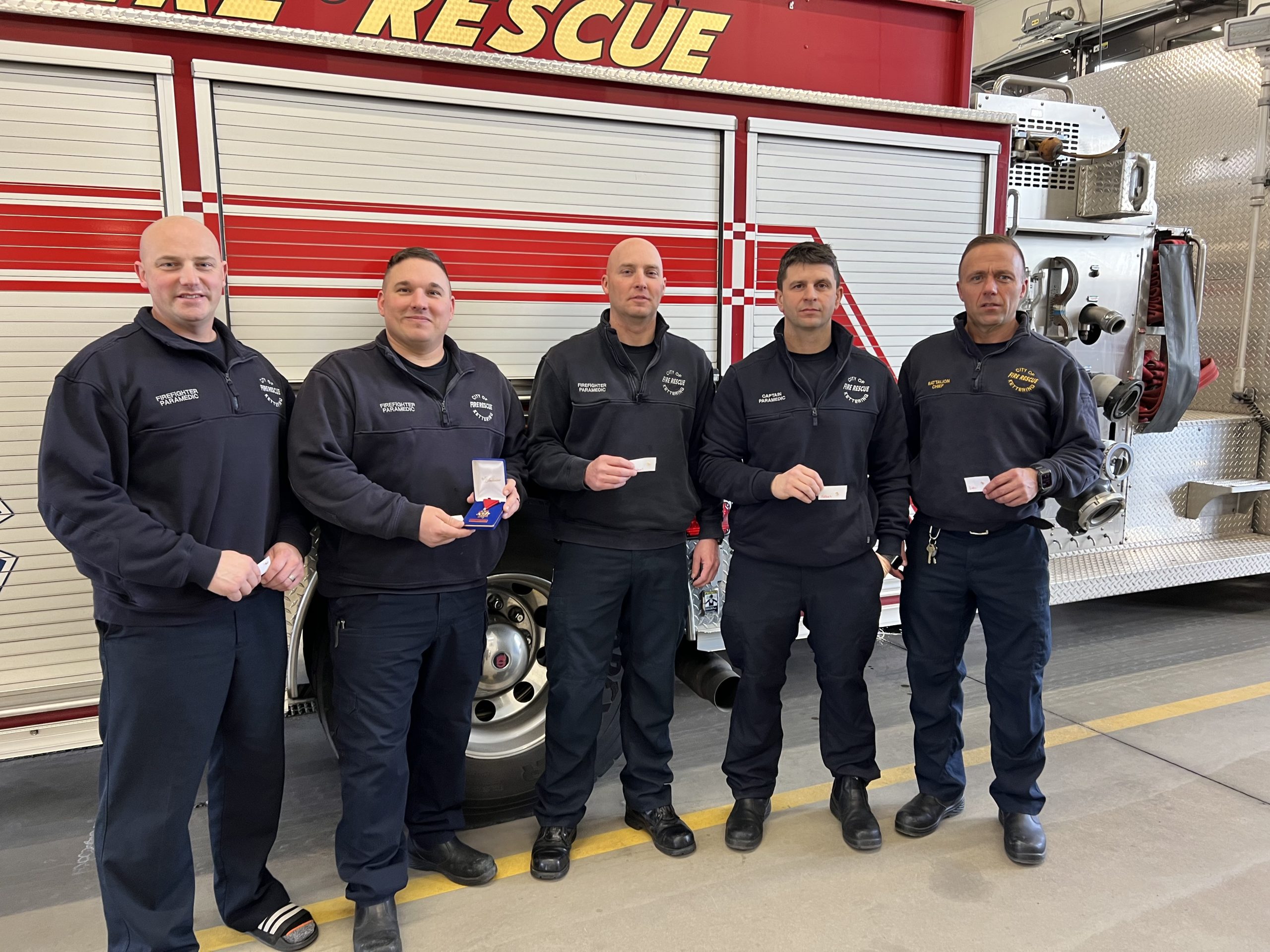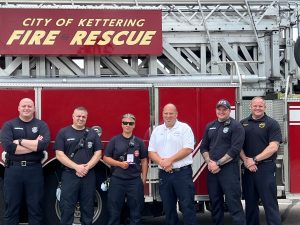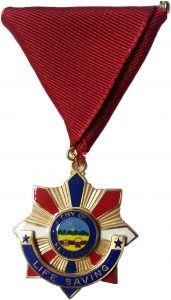Fire Department Awards
Life Saving Awards
The Kettering Fire Department’s Life Saving Award is a prestigious and incredible honor awarded to active duty personnel whose direct actions save the life of person whose heart has stopped beating and shows no signs of life. This award is only achieved when the patient who was clinically deceased is not only resuscitated and regains life sustaining functions, but moreover is able to make a full recovery and resume normal life activities. It is one of the most rewarding accomplishments any member of this organization can make in the course of their career and to know that their actions contributed to saving the life of another human being. To understand the significance of the last statement, the individual that is saved must be discharged from the hospital and resume normal life activities.
2024 Recipients
LSA 24-1507 (2/28/2024)



LSA 24-1965 (3/7/24)

LSA 24-3891 (5/30/24)

LSA 24-6625 (9/5/24)

FF/P Pete Burcham, FF/P Jon Kaney, FF/P Bryce Kuhn, FF/P Justin McVicar (not pictured: Capt. Nate Hall)
LSA 24-6625 (9/5/24)

Capt. Eric Hagemeyer, FF/P Chris Caudill, FF/P Ryan Hill, FF/P Austen Mellendorf
LSA 24-7660 happened at the Kettering Recreation Complex while the patient was working out. The patient collapsed and was found to have no pulse and was not breathing. Quick actions of CPR and AED application from patrons and a staff member prior to Kettering EMS arriving on scene helped save this person’s life. Thanks to Sarah O’Malley, Jordan Hickey, and Thomas Madigan for selflessly and without hesitation taking actions that helped save this person’s life. Sarah, Jordan and Thomas all received the Kettering Fire Department’s Citizenship Award.

2023 Recipients


2022 Recipients

2021 Recipients


